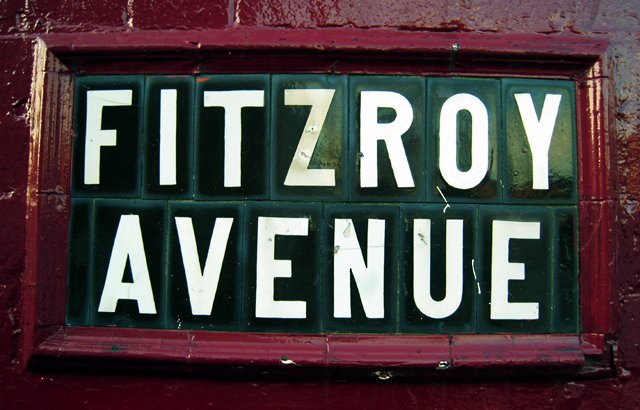Irish Superman
“The father of Irish golf was a Scotsman. My Irish friends hate me for sharing this... but it’s true!”
George Lockhart Baillie came to Ireland from the Scottish city of Dundee where he was a school teacher. Dundee was his parents home town! Mine too!
Baillie spent his early years in East Lothian on the edge of Edinburgh where his father had been appointed the Inland Revenue Officer to the town of Inveresk. With Musselburgh Old Links and Royal Musselburgh Golf Club on his doorstep, the young Baillie soon became a reasonable golfer.
He also became an educator and returned to Dundee for his first teaching post. There, he played his golf at Monifeith & Carnoustie, occasionally crossing the River Tay by ferry to the Fife town of St Andrews.
The Baillies, with their nine children, eventually moved from Dundee to Belfast where he was appointed English Master at Belfast Royal Academy, the oldest school in the city.
Royal Belfast Golf Club is a beautiful parkland course on the shores of Belfast Lough, the oldest golf club in Ireland.
“The conscientious Baillie was in high demand as an educator but his golfing prowess also stood him in good stead.”
Within weeks of arriving in the city, the young Scot was asked to lay out six rudimentary holes on the shores of Belfast Lough, that became The Belfast Club, later ‘The Royal Belfast Club’, the first golf course & club in all of Ireland. Baillie became its honorary secretary!
Baillie continued his work as an educator but in his spare time, he explored the natural golf landscape that stretched along Northern Ireland’s north & east coasts. The development of the railways in Ireland was a decade behind that of the rest of Britain, but it followed a similar pattern; first, a railway line followed by a station, then a hotel and quite often a golf course. It was a winning formula!
WEARING THE GREENS
Whether Baillie was ‘incentivised’ by the railway companies or purely following his golfing passion, he became prolific in establishing the ‘greens’ as the Irish called golf courses around Ireland’s coastline.
The Scotsman was on a roll, even organising group excursions for the English and Irish golf neophytes from Belfast & Dublin, providing 1st class rail travel, golf and accommodation. In this way, he became one of the game’s first ‘tour operators’!
Royal Portrush presents an ocean of billowing greens. Harry Colt took the routing into the dunes and established ‘Dunluce Links’
In 1888, travelling by train to Portrush in the north, he was so impressed by the magnificent dunes, he immediately went to work laying out nine rudimentary holes. The course was extended to 18 a year later by Old Tom Morris.
Baillie became a founding member, joint honorary secretary and treasurer of The County Club (Portrush), later, under the patronage of the Duke of York, the Prince of Wales to become the Royal Portrush Golf Club.
If you get it on a good day, Portrush is a pleasant encounter. But it’s most often windy and then a course of a completely different character.
The initial course was established on the landward side of the main coastal road, easier for the shorter game of the day. 30 years later, Harry Colt took the routing into the dunes and established ‘Dunluce Links’ where The Open Championship returned in 2019 after a gap of 68 years, a momentous occasion for this corner of Northern Ireland. After its hugely successful staging, Royal Portrush will serve as host again in 2025.
ROYAL COUNTY DOWN
Royal County Down is ranked as one of the top ten courses in the world. It’s easy to see why!
Ever on the prowl for creating more golf courses, Baillie discovered yet another stretch of magnificent links just north of the village of Newcastle, 30 miles south of Belfast. In double-quick time he laid out a rudimentary nine holes and yet again became the club’s founding member, joint honorary secretary and joint honorary treasurer at an inaugural meeting on 23 March 1889.
When Old Tom Morris was invited to extend the links a year later, he asked why they had sent for him. “This Mr Baillie kens mair about laying golf links than I dae,” the Fifer retorted. “They had nae need to send for me.” High praise from the ‘Grandfather of Golf’ indeed!
The clubhouse of Royal County Down Golf Club is overlooked by the Mountains of Mourne and flanked by Dundrum Bay
It’s funny how George Baillie is not so well-known in the annals of Irish golf. Was it because he was Scottish? That doesn’t seem the case as most of the game’s earliest proponents came from the East Coast of Scotland.
The list of Irish courses Baillie went on to establish, either by conducting feasibility studies or doing the actual design, is prodigious. 22 courses can be attributed to him in Northern Ireland alone although I reckon there are more. Here’s a list…
Leopardstown (1891), Lisburn (1891), Rostrevor (1892), Ballynafeigh (1893), Bundoran (1894), Larne (1894), Knock (1895), Massereene (1895), MacGilligan (1896), Greenore (1896), Garron Point (1899), Ardara (1899), Castlerock (1900), Kirkistown (1902), Magilligan (1906), Scrabo (1907), Whitehead (1909), Toome (1909), Omagh (1910), Balmoral (1914).
GEORGE BY GEORGE!
Baillie enjoyed his golf well into his 70s, ending his ‘earthly’ round at his home at Number 75 Fitzroy Avenue, Belfast.
Another famous ‘George’ sang about that very street in one of his best-selling albums, ‘Astral Weeks’. George ‘Ivan’ Morrison - better known as Van Morrison sang about ‘Madame George’. Here’s the opening verse…
‘Down on Cyprus Avenue
With a childlike vision leaping into view
Clicking and clacking of the high-heeled shoe
Ford and Fitzroy and Madame ‘George’
Was George Morrison, aka ‘Van the Man’ singing about our George Baillie! I don’t think so! Unless there was a side to George we don’t know about!







